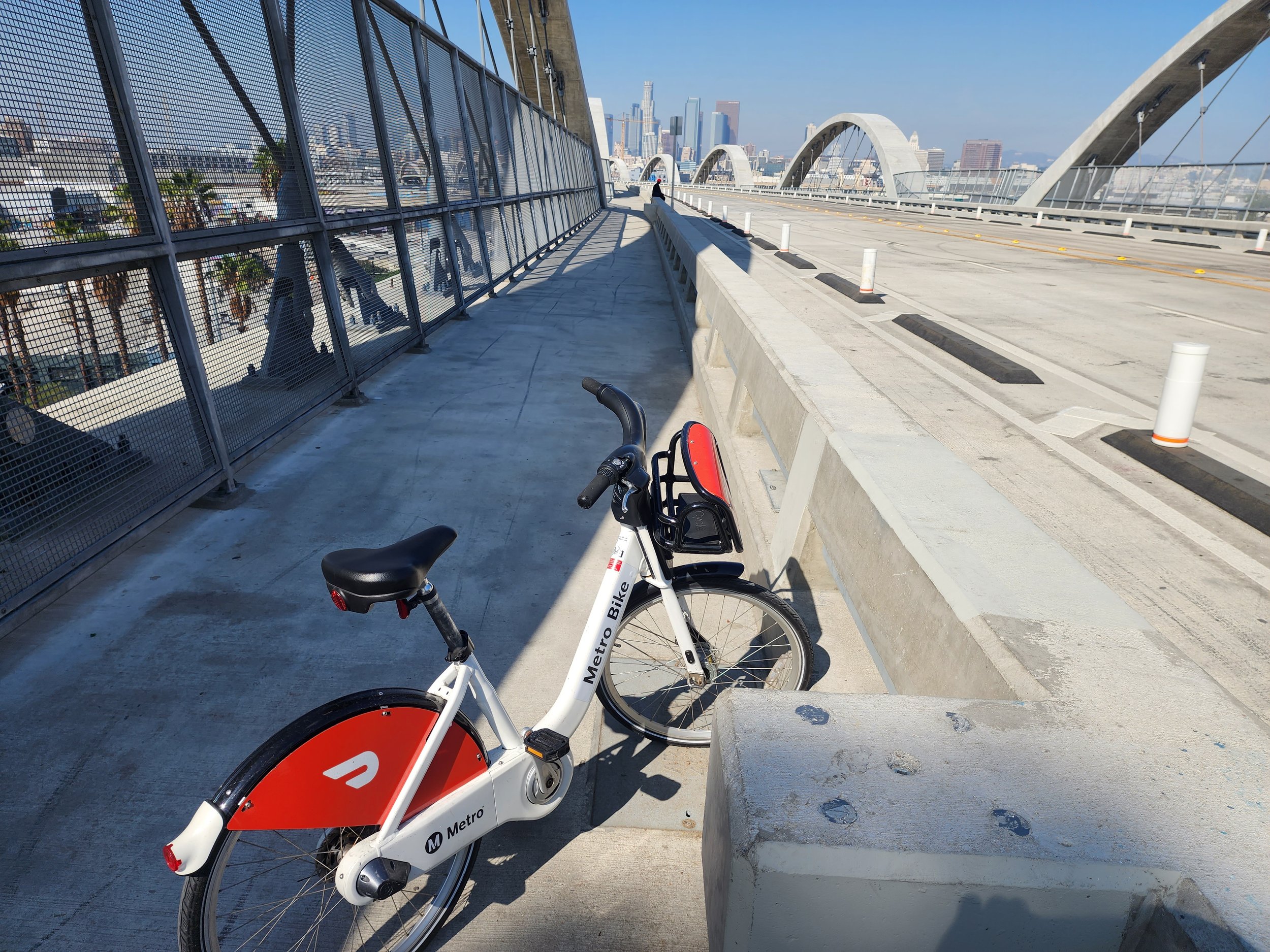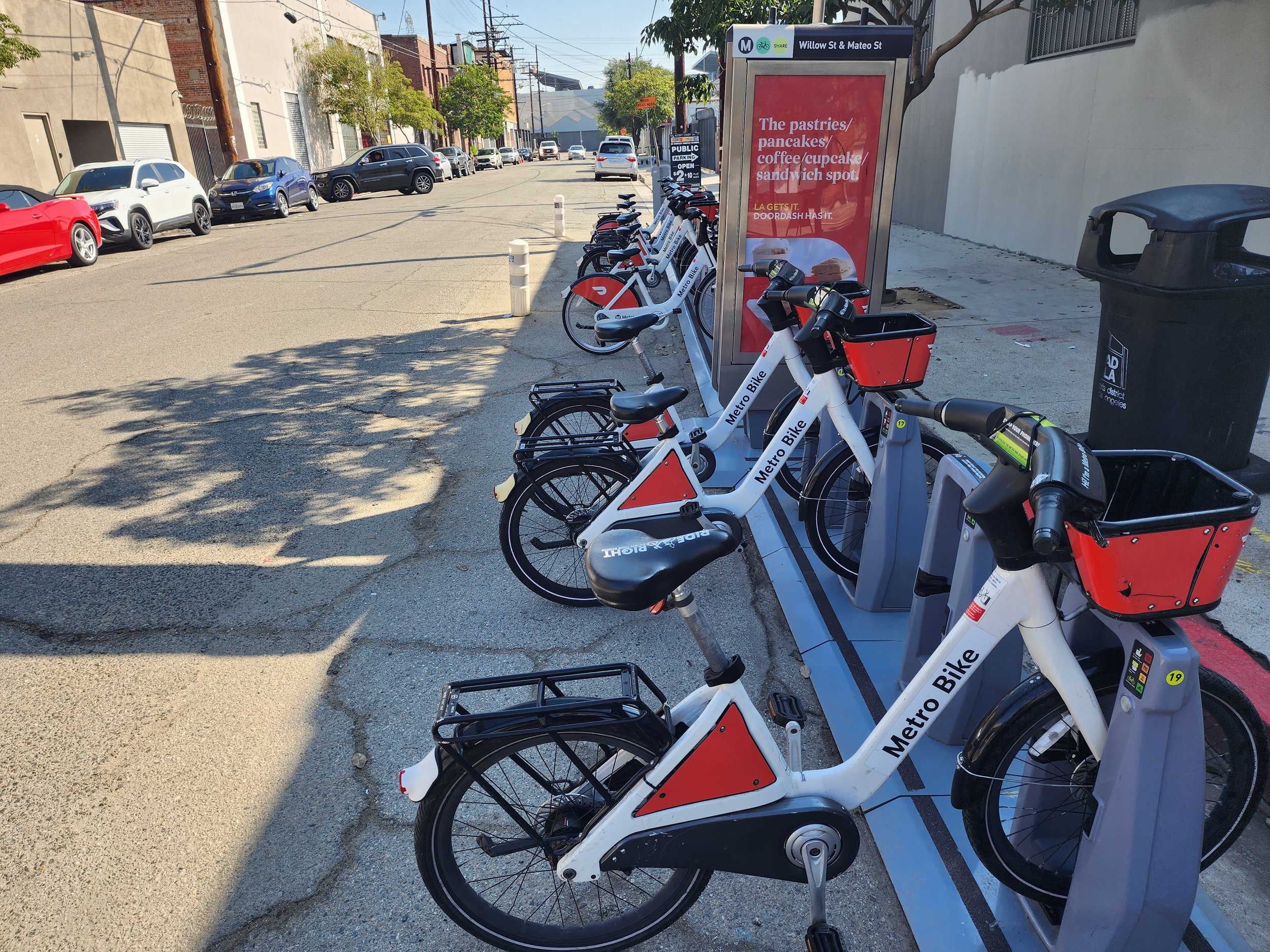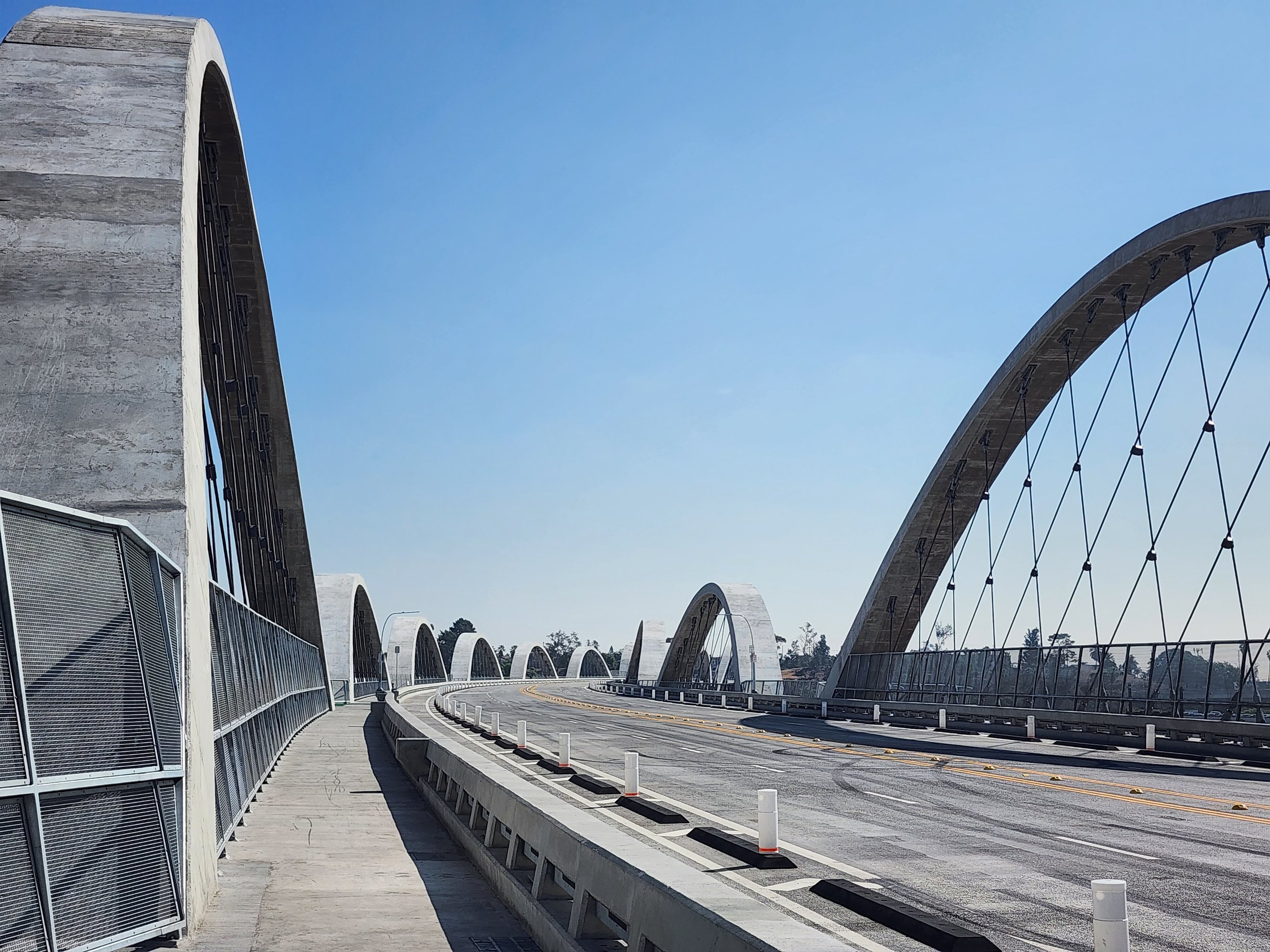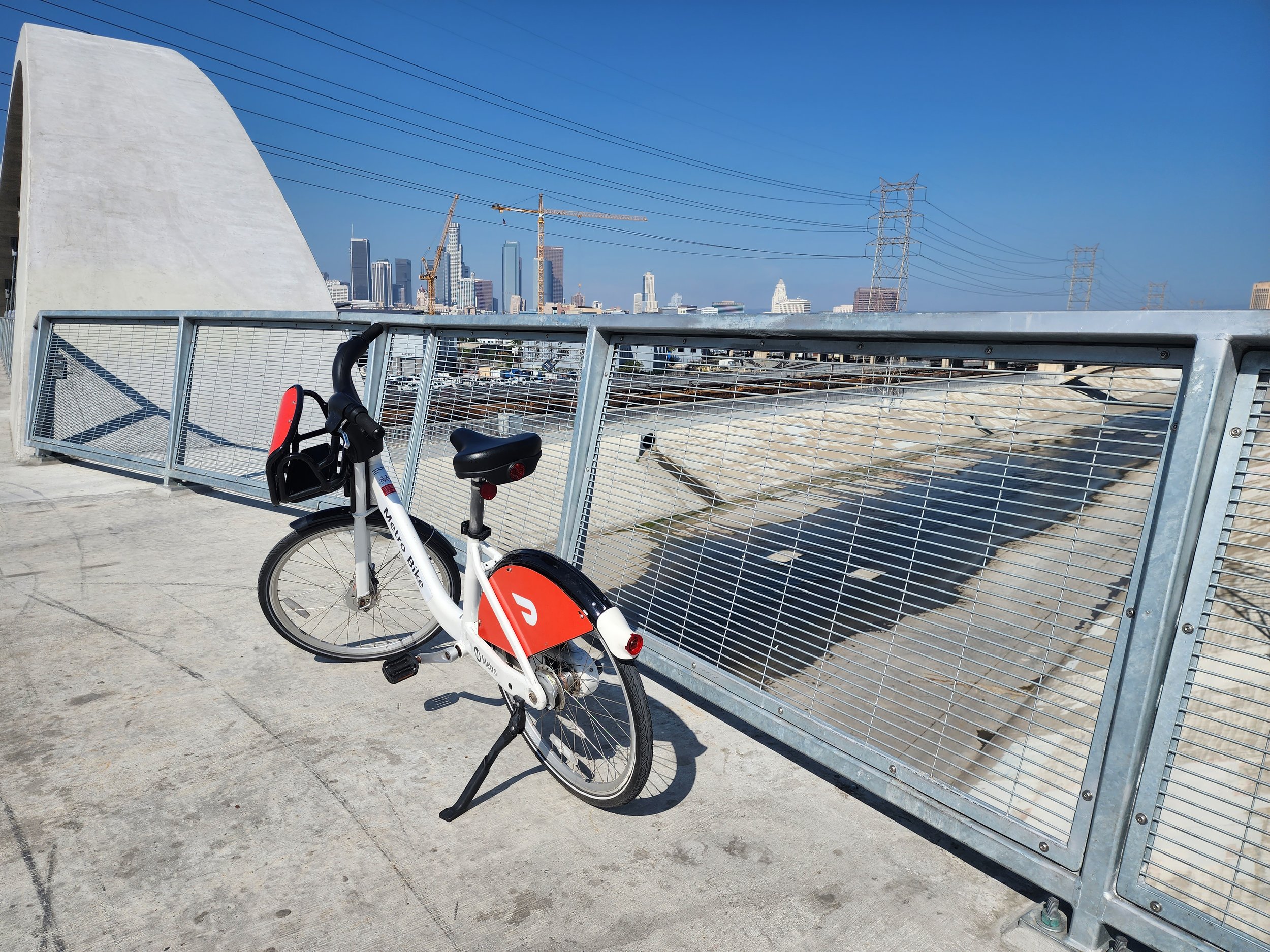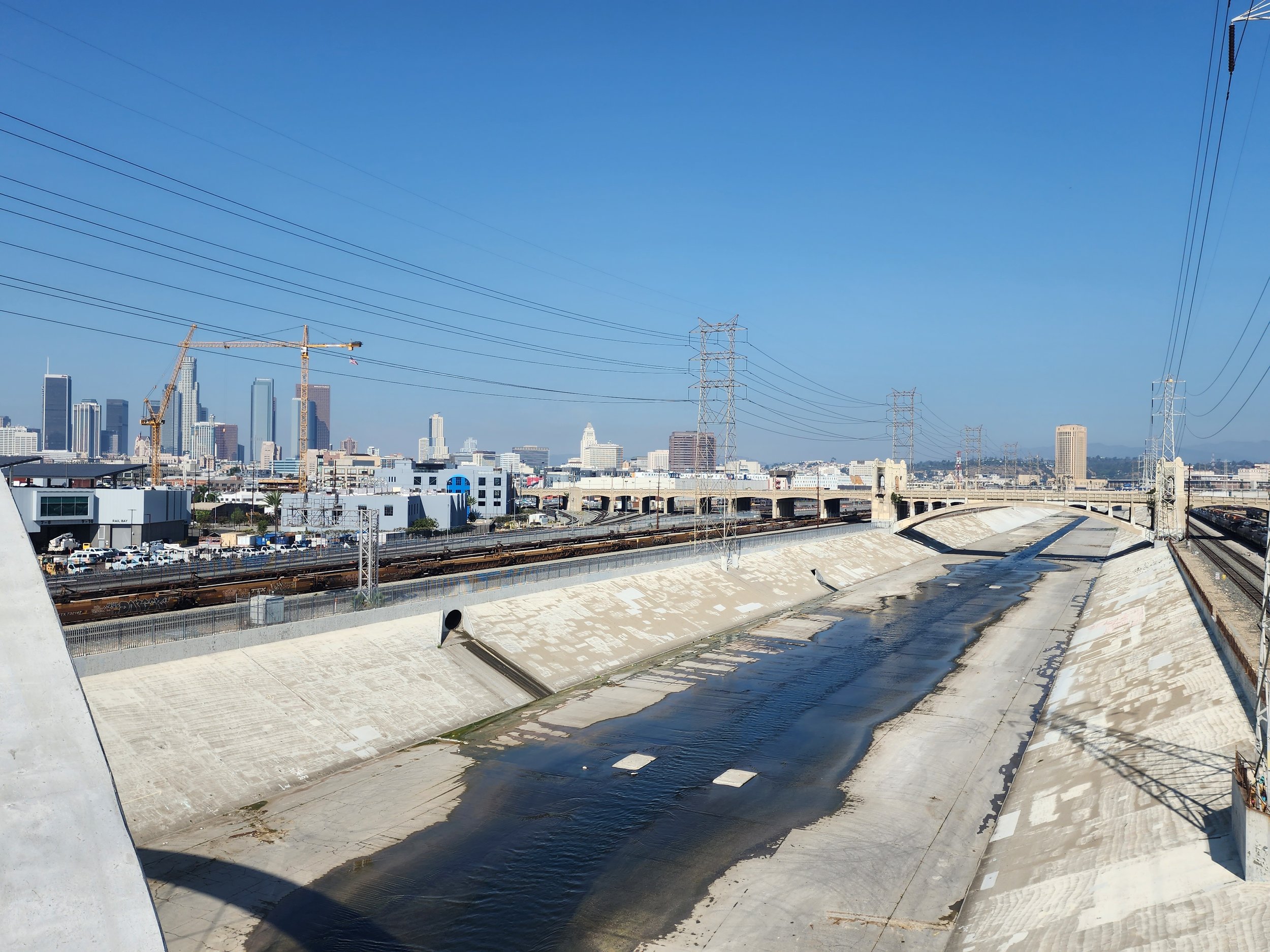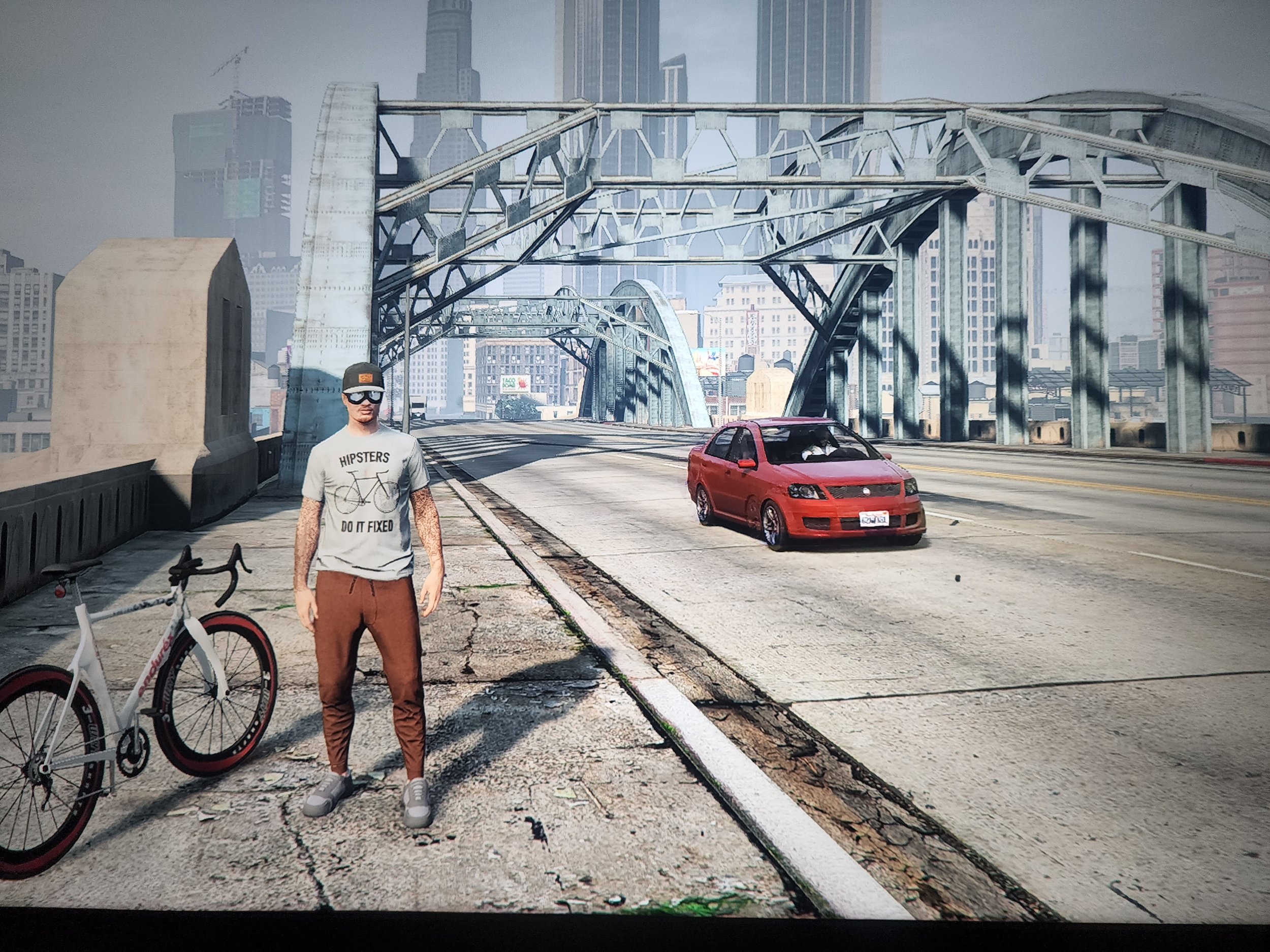I love the Watch_Dogs franchise. Or rather, I want to love it. I certainly love the overall concept. The distinguishing features of the series incorporate some of my favorite elements from video games in general, as well as more particular niche interests. For one thing, the games are set in contemporary urban open worlds that can be experienced in “sandbox” style, which is one of my personal favorite video game genres. The game worlds are also based on real world cities, which is another plus for me that I will talk more about later. The second defining feature of the Watch_Dogs franchise for me is the thematic focus. The game's primary thematic concern, as indicated by the franchise name, is technologically-enabled surveillance in modern society. The narrative and gameplay address obvious concerns surrounding intrusive technology in terms of the erosion of privacy. A related major component, particularly in the first game, involves urban infrastructure, as well as how the implementation of emerging technology for city management produces augmented spatialities and governmentality. Now, as I said earlier I definitely love the concept, but how the games execute these concepts can be more difficult to ascertain. I have looked forward to the latest entry in the series, Watch_Dogs: Legion, for the past couple of years and have enjoyed playing it over the past month or so. Now that I've had some time to think about the game, I wanted to offer some thoughts before my scant video game time becomes occupied with Cyberpunk 2077 next week. I am going to organize my thoughts and comments around the two themes I have already identified that appeal to me most about these games: the urban open-world play environments, and the thematic engagement with the issues of surveillance capitalism and imaginaries of resistance.
Open Worlds: Exploring Virtual Spaces
My love of open world games, and in particular urban sandbox style games, began with Grand Theft Auto 3. Driving around the three islands of Liberty City sowing discord while listening to Chatterbox FM was unlike any video game I had ever experienced. Nearly 20 years later, open world exploration remains my favorite video game pastime. Self-directed exploration of a virtual environment provides me with a surefire circuit for relaxation, recreation, and escapism. I have thus far been focusing on the particular sub-genre of urban open world games, although I certainly have great appreciation for other varieties as well. For example, my experiences exploring the worlds of Oblivion and Skyrim remain pinnacles of fantasy role-playing.
Now, even when limiting our purview to the subgenre of modern city environments, we can distinguish urban open worlds in video games between those that are based on actually existing cities, and those that are wholly fictional or imagined. I enjoy both types for their unique qualities and appreciate them in different ways. For instance, an entirely fictional virtual city offers the potential to explore an environment that is totally unknown and surprising, largely free from the baggage of preconception and expectation. Furthermore, a virtual city created from scratch is not necessarily bound by the constraints of real world geography and can therefore endeavor to prioritize a game space optimized for play and creative mobility. An example of this category might be the city of Steelport from the Saints Row series, although clearly even this fictional city bears evidence of association and allusion to real-world urban centers. Another example that comes to mind is the setting of the Crackdown games. In this case it is an extremely generic near-future urban environment; I don't even recall the name of the fictional city from the first two games... Port Town? Star Union? Megalopolis? However, the game world is designed to accommodate what for me is the key feature of the Crackdown series: bounding from rooftop to rooftop collecting power orbs, increasing agility stats so that you may reach increasingly higher peaks. Indeed, I was always somewhat taken aback to be walking or driving along a street in Crackdown-town and notice all of this superfluous level of street level detail that the designers had included, such as signage for shops and other businesses with punny names as if this was a Rockstar game.
Speaking of Rockstar, the Grand Theft Auto series provides a perfect point of interconnection between the categories of fictional virtual cities and those based on real world locations. The aforementioned Liberty City from Grand Theft Auto 3, for example, is a fictional city: the name suggests a link to New York by evoking one of that city's greatest landmarks, yet the design of the game world itself does not incorporate much in the way of specific iconography or virtual re-creations of specific places. Vice City, the subsequent game in the series, declares a setting in Miami of the 1980s beginning with its titular allusion, yet that is only the beginning. This game furthers the funhouse-mirror-view-of-America-as-seen-by-Brits-through-the-lens-of-American-popular-culture that began in Grand Theft Auto 3. Yet in addition to drawing from gangster films and other pop culture of that era the game also incorporates limited recreations of iconic Miami locations. San Andreas represented an even further evolution, not only further in time to the 1990s where the game draws heavily from pop culture and media depictions of Los Angeles from that era, but also to the scale of the environment and the degree of verisimilitude attempted in its recreation of real world cities. Grand Theft Auto V extends this trajectory to an exceedingly ambitious simulacrum of Southern California that is simultaneously a parody of contemporary America, a condensed impressionistic depiction of Greater Los Angeles, as well as strikingly accurate recreations of actually existing locations. Of course, the metropolis of GTA V is Los Santos rather than Los Angeles, because while the game dips its toes in nearly simulation level depictions of LA, it's other foot remains firmly planted in the satirical and cartoonish Grand Theft Auto alternate universe.
Further along the spectrum of realistic video game depictions of actual cities we find more grounded portrayal of real world sites. Some of the best examples come from the Assassin's Creed series, where some of the great cities of the world are recreated based on previous historical eras. Now, one of the reasons that I love accurate representations of real world cities is that they provide a novel way of interfacing, in a mediated and imaginative way, with an existing location. This offers rich benefits whether you have personal experience of the place, or if you have never actually visited. When you are familiar with the place depicted you can test the designed world of the video game against your personal knowledge and memory. You can, for instance, go seeking for a particular location or landmark to see if it has been included in the game world, and if it has been included you can compare the accuracy with your own experience or recollection. However, a detailed re-creation of a real city can be a wonderful means of learning more about that place. This is why one of my all-time favorite video game cities is the re-creation of Manhattan in True Crime New York City. The play space of True Crime NYC is a GPS-accurate block-by-block re-creation of the Manhattan grid. Because the game was released in 2002 it obviously does not offer the level of detail or graphical fidelity that we are spoiled by in more recent video games. However, True Crime New York City does offer the distinct pleasure of being able to race along every Avenue on the island of Manhattan while crossing every real-world street and encountering none of the real-world traffic. One of my favorite things to do in True Crime NYC was to think of a prominent building or other landmark, look up the cross streets on a map, then go to that intersection in the game to see if the landmark was included. Most of the time I found that it was. I remember playing the game after returning from a brief visit to Manhattan where I had stayed in Midtown for an academic conference. In the game I was able to re-create the route of my daily walk from the hotel to the conference venue, finding satisfying details such as the inclusion of a church right on the street corner where it had been during my stay. I also discovered landmarks that had been previously unknown to me, and learned things about New York City history from playing the game. For instance, one time while racing down 3rd Avenue I was stopped in my tracks by the appearance of a massive building with an attached tower. I brought my virtual car to a screeching halt in the intersection to face this distinct structure. The building stood in such contrast to the more generic streetscapes that fill in the spaces between more customized locations in True Crime NYC that I felt compelled to look up the cross streets online to discover whether this was indeed a re-creation of a landmark that I was not familiar with. It turned out that this structure was the mosque and minaret of the Islamic Cultural Center of New York. Yet another time I was speeding along through lower Manhattan. As you are driving in True Crime NYC, the names of streets that you are crossing are displayed at the top of the HUD. I saw in quick succession the street names “Duane” and “Reade” flash by at the top of my screen. I went back to confirm what I had seen, and upon further investigation learned that the Duane Reade convenience stores which are so ubiquitous in Manhattan are indeed named for the location of the company's original warehouse which was situated on Broadway between the streets of Duane and Reade. Moments like these are a large part of why I continue to feel such fondness for the New York City presented in the True Crime series even after so many subsequent games have presented more dynamic representations of the Big Apple.
Watch_Dogs’ London: Virtual Horizons of Urban Life
The London of Watch_Dogs: Legion straddles the boundary line between realistic representation and fanciful imagination by virtue of its near-future setting. The city is unmistakable, rendered with a plethora of recognizable landmarks and significant amount of granular detail. However, the London-as-we-know-it is also augmented by certain science fiction trappings: landmarks such as Big Ben and Tower Bridge are emblazoned with massive holographic projections indicating a general threat level for terroristic activity along with the logo of the private military company overseeing local security. The other major deviation concerns traffic through the city, both at street level and in the skies above. The road traffic consists of an assortment of cars, trucks, and motorcycles, along with iconic London vehicles like black cabs and double-decker busses. These more familiar conveyances are joined also by fleets of autonomous taxis or self-driving ride-share vehicles (the in-game lore establishes that all personal vehicles are legally mandated to have autonomous driving capability). One gameplay change that this introduces is the ability to commandeer vehicles on the move without “stealing” the car and inconveniencing a driver. The autonomous taxi vehicles in fact have no separate driver compartment or steering wheel, and are instead designed like a commuter train passenger carriage with two benches of seats facing each other (they are incredibly similar to the autonomous taxis featured in the execrable third season of Westworld).
Self-driving cars represent one element of the near-future technological projections featured in the game. One of the other major additions (and more significant in terms of gameplay impact) is the ubiquitous drone presence in the city. Above the ground traffic buzzes a constant stream of autonomous drone vehicles, flying quadro-copters that largely follow the terrestrial street routes. Drone devices are mostly confined to a number of vehicle categories: delivery drone quad-copters ferrying packages; slow-moving cargo drones hauling crates and construction materials; CToS surveillance drones hovering around to monitor goings-ons in the city; news drones filming footage for GBB reportage (the in-game alter ego of the BBC); and assorted anti-pursuit and riot control militarized drones. The constant stream of drone traffic adds a distinctly cyberpunk element to the city (while also resonating with contemporary culture and directions of technological evolution), but it also introduces one of the most substantial gameplay innovations into the Watch_Dogs formula. One of the fundamental gameplay elements in Watch_Dogs has always been “hijacking” security cameras, i.e. “hacking” into them with your mobile device to gain a new perspective on a particular location, scout enemy positions, and leapfrog from camera to camera to solve puzzles (as long as you have line-of-sight you can progress along a chain of CCTV installations). I’ve always appreciated this aspect of the Watch_Dogs gameplay loop in part because it is (usually) not reliant on combat encounters and offers novel approaches to platforming segments. In Legion, if you are struggling to get line-of-sight on a particular CCTV position or need to gain access to a harder to reach area, you are often able to hijack a passing drone, grabbing it out of the sky and piloting toward your objective. As you gain proficiency with this practice it affords some creative platforming and puzzle solving, as well as emergent approaches to clearing enemy encampments.
The London of Watch_Dogs: Legion is often quite beautiful; it is also often buggy, glitchy, and bizarre looking, owing to a host of persistent graphical issues. Yet at its best, when all the environmental elements are working in concert, you can get some dynamite scenes of Regent Street illuminated by a late afternoon sun, or a magisterial Westminster across the Thames (the Thames, on the other hand, is real rubbish: the river traffic is a ridiculous procession of pop-ins and low-texture polygonal watercraft). Aside from the near-future aesthetic embellishments the Legion designers largely leaned in to a realistic re-creation of London. The game’s map and designated districts bear close cartographic correspondence to its corporeal counterpart. I last visited London in 2016, and I have successfully recreated certain walking routes from that trip in Watch_Dogs’ London (as is my custom in these sorts of games...it may seem silly, but it’s how I prefer to play). Crossing the Golden Jubilee Bridges from Charing Cross to Southbank, or walking from the base of BT Tower to BBC Broadcasting House, provide pleasing pretensions of previous perambulations. While we’re on the subject of pedestrianism: One of the other street-level innovations that I think is worth mentioning is the addition of building access doors that open onto the sidewalk. These are one-way portals (you cannot use them to access a building interior, and indeed the only interior space that can be glimpsed through one of these open doorways is a black void), but they allow NPC figures (perhaps we should designate these PPCs...potentially playable characters?) to step out onto the street. It’s a neat feature that adds to the sense of a busy, bustling streetscape and adds to the immersive illusion of navigating a densely populated city sidewalk.
(A brief sidenote regarding transportation options: the Underground system is well represented throughout the map in the form of tube stations that function as fast-travel transit nodes. There are no functioning, ride-able metro trains, which is understandable [the Tube is wonderful but not really known for the excellent views it offers] while also a bit of a disappointment [I’m a sucker for functioning public transit in games...I rode every inch of rail track in GTA IV and V, and thoroughly appreciated views of the Chicago skyline while riding the L train in the original Watch_Dogs]. Also, while acknowledging the technical limitations and risks of feature creep or bloat, bicycles would have been a wonderful option for engaging with the rich cyclogeography of London [maybe even for limited, dedicated courier activities?])
OK, so London is (mostly) beautifully rendered, but how can you engage with the game space? What opportunities are provided for exploring and interfacing with the environment through gameplay? Watch_Dogs: Legion is a bit of a letdown in this area, as the presence of environmental activities seems to have been scaled back in comparison with the earlier games in the series. This will surely be a trivial concern for some players, but I really enjoyed how side activities were embedded into the game world of the original Watch_Dogs’ simulacra of Chicago. You could encounter a shell game on a busy street corner; play chess in a coffee shop or have a drinking contest in a bar. There were various augmented reality activities such as timed platforming challenges or fantastical virtual reality battle modes. My favorite side activities in the original Watch_Dogs were the QR code puzzles: portions of QR codes were painted along the sides of buildings throughout the city, so that viewing the completed image required a combination of exploration, platforming, and CCTV hijacking in order to discover a vantage point from which the code could be viewed from the right perspective.
As I’ve already mentioned, the availability of side activities in Legion seems greatly scaled back. There are pubs where you can drink beer (triggering temporary audio-visual distortions) and play a game of darts (which I have found to be far too tedious and aggravating to be worth the effort). Most pubs also feature slot machines, but unlike the first Watch_Dogs where slot machines functioned as a playable gambling minigame, in Legion slot machines are hackable (meaning you can siphon a small amount of money with the push of a button) but are not playable. There are Parcel Fox delivery missions, which are OK: assorted A-to-B courier assignments with varying prerequisites for success, such as a countdown timer for parcel delivery, limits to the amount of “damage” a package may receive en route to the destination, and degrees of “wanted level” that will activate police pursuit of your contraband cargo. These activities are decent and provide a fun way to explore alleyways and other alternative routes around the city, particularly as you try to avoid automated checkpoint stations that will alert the police force to your location.
The other substantial environmental exploration activity is represented by “paste-up locations”: particular spots dotted across the city where you can apply a large-scale wheatpaste poster. These are typically located above street level (sometimes quite high up on a rooftop) and therefore require some figuring out how to reach the location. I found this to be a fun diversion for a while, but the novelty wears off rather quickly. They are nowhere near as fun or satisfying as the QR codes from the first Watch_Dogs. The available designs or “stencils” that you can apply are limited to the point of feeling monotonous once you’ve used them all, I was extremely frustrated at the lack of a “checkmark” icon or some other signifier on the game map to indicate when a paste-up location had already been completed.
That leaves collectibles. There are hundreds of collectibles scattered across the game world. Seriously, there are just so many. I’m familiar with the general criticism of Ubisoft’s approach to open world design, that it offers exhaustive and repetitive collecting, but I don’t play many video games so I don’t have much firsthand experience with this phenomenon. I get it now. Look, I played all three Crackdown games solely for the joy of bouncing around the cityscape hunting agility orbs. This element of the Crackdown experience provides a wonderful “mindless” gameplay loop where you can just put on some music or a podcast and bounce around for dopamine hits and scratching the completionist itch. In Watch_Dogs: Legion this translates to commandeering a cargo drone that you can (slowly) ride around the city picking up collectibles one by one. It also lends itself to a similar experience to the above mentioned Crackdown approach, but after a while it is agonizingly tedious. I also appreciate having loads of content in a game, but Legion takes this to the point of absurdity. The amount of collectibles across the map seem self-replicating and endlessly proliferating. I’ve nearly maxed out all the available tech upgrades: how can there possibly be so many tech point icons on my map? Ultimately the most rewarding outcome of this gameplay experience are the aerial vistas it affords and the new areas of the city that you can discover while hunting for easter eggs (often leading me to research particularly interesting locations to discern the degree to which they were inventions of the designers or faithful re-creations of London locales).
There are some further notable examples of environmental storytelling that contribute to the overall atmosphere and accord with my personal experiences of London. For example, visible homelessness is pervasive in this virtual version of London. This is not an innovation in urban open world design (the Grand Theft Auto series has had unhoused NPCs since at least GTA 3...oftentimes these have been deployed as jokey “bum” characters or as exemplars of urban eccentrics [GTA IV had some notable examples of the latter], although GTA V adds a sharper political edge to these depictions with its frequent allusions to economic recession and the pointedly politicized Dignity Village encampment), but these depictions feel like an integral component of Legion’s world rather than isolated dioramas or window dressing. This is accompanied by explicit activist installations and political slogans (some have more teeth than others). The game also directly addresses Brexit and broader issues of immigration and refugee populations. An arena in the game’s Lambeth borough (I think the closest real world analogue is London Stadium, but I’m not sure...incidentally, I have particularly enjoyed the inclusion of baseball stadia in the previous series entries...the first Watch_Dogs begins in a baseball stadium during a night game [although it doesn’t resemble either of Chicago’s real world major league ballparks], and Watch_Dogs 2 features a fictional San Francisco ball club with its own stadium based on Oracle Park) has been re-purposed as a deportation detention facility called the Eurpoean Processing Center.
These more politicized elements of Legion’s London lead us to a consideration of how the game engages with the ideological dimensions evoked by its thematic trappings. In the second part of this commentary I will focus on this aspect of the game, in particular how Watch_Dogs: Legion gamifies class solidarity and commodifies culture jamming.
